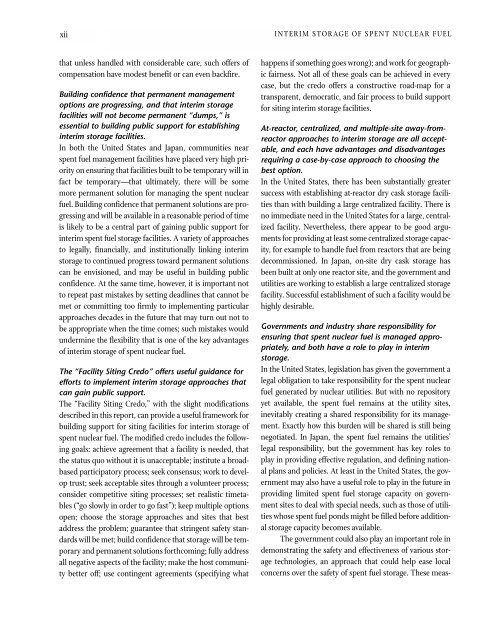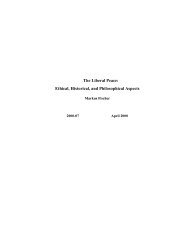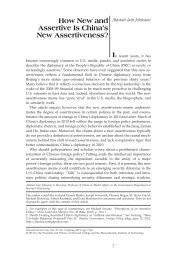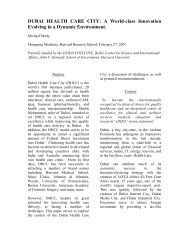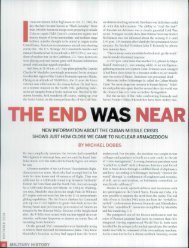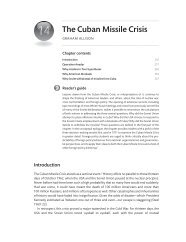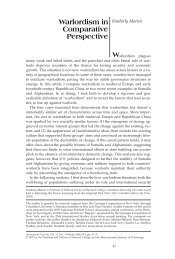Interim Storage of Spent Nuclear Fuel - Woods Hole Research Center
Interim Storage of Spent Nuclear Fuel - Woods Hole Research Center
Interim Storage of Spent Nuclear Fuel - Woods Hole Research Center
Create successful ePaper yourself
Turn your PDF publications into a flip-book with our unique Google optimized e-Paper software.
xii<br />
that unless handled with considerable care, such <strong>of</strong>fers <strong>of</strong><br />
compensation have modest benefit or can even backfire.<br />
Building confidence that permanent management<br />
options are progressing, and that interim storage<br />
facilities will not become permanent “dumps,” is<br />
essential to building public support for establishing<br />
interim storage facilities.<br />
In both the United States and Japan, communities near<br />
spent fuel management facilities have placed very high priority<br />
on ensuring that facilities built to be temporary will in<br />
fact be temporary—that ultimately, there will be some<br />
more permanent solution for managing the spent nuclear<br />
fuel. Building confidence that permanent solutions are progressing<br />
and will be available in a reasonable period <strong>of</strong> time<br />
is likely to be a central part <strong>of</strong> gaining public support for<br />
interim spent fuel storage facilities. A variety <strong>of</strong> approaches<br />
to legally, financially, and institutionally linking interim<br />
storage to continued progress toward permanent solutions<br />
can be envisioned, and may be useful in building public<br />
confidence. At the same time, however, it is important not<br />
to repeat past mistakes by setting deadlines that cannot be<br />
met or committing too firmly to implementing particular<br />
approaches decades in the future that may turn out not to<br />
be appropriate when the time comes; such mistakes would<br />
undermine the flexibility that is one <strong>of</strong> the key advantages<br />
<strong>of</strong> interim storage <strong>of</strong> spent nuclear fuel.<br />
The “Facility Siting Credo” <strong>of</strong>fers useful guidance for<br />
efforts to implement interim storage approaches that<br />
can gain public support.<br />
The “Facility Siting Credo,” with the slight modifications<br />
described in this report, can provide a useful framework for<br />
building support for siting facilities for interim storage <strong>of</strong><br />
spent nuclear fuel. The modified credo includes the following<br />
goals: achieve agreement that a facility is needed, that<br />
the status quo without it is unacceptable; institute a broadbased<br />
participatory process; seek consensus; work to develop<br />
trust; seek acceptable sites through a volunteer process;<br />
consider competitive siting processes; set realistic timetables<br />
(“go slowly in order to go fast”); keep multiple options<br />
open; choose the storage approaches and sites that best<br />
address the problem; guarantee that stringent safety standards<br />
will be met; build confidence that storage will be temporary<br />
and permanent solutions forthcoming; fully address<br />
all negative aspects <strong>of</strong> the facility; make the host community<br />
better <strong>of</strong>f; use contingent agreements (specifying what<br />
INTERIM STORAGE OF SPENT NUCLEAR FUEL<br />
happens if something goes wrong); and work for geographic<br />
fairness. Not all <strong>of</strong> these goals can be achieved in every<br />
case, but the credo <strong>of</strong>fers a constructive road-map for a<br />
transparent, democratic, and fair process to build support<br />
for siting interim storage facilities.<br />
At-reactor, centralized, and multiple-site away-fromreactor<br />
approaches to interim storage are all acceptable,<br />
and each have advantages and disadvantages<br />
requiring a case-by-case approach to choosing the<br />
best option.<br />
In the United States, there has been substantially greater<br />
success with establishing at-reactor dry cask storage facilities<br />
than with building a large centralized facility. There is<br />
no immediate need in the United States for a large, centralized<br />
facility. Nevertheless, there appear to be good arguments<br />
for providing at least some centralized storage capacity,<br />
for example to handle fuel from reactors that are being<br />
decommissioned. In Japan, on-site dry cask storage has<br />
been built at only one reactor site, and the government and<br />
utilities are working to establish a large centralized storage<br />
facility. Successful establishment <strong>of</strong> such a facility would be<br />
highly desirable.<br />
Governments and industry share responsibility for<br />
ensuring that spent nuclear fuel is managed appropriately,<br />
and both have a role to play in interim<br />
storage.<br />
In the United States, legislation has given the government a<br />
legal obligation to take responsibility for the spent nuclear<br />
fuel generated by nuclear utilities. But with no repository<br />
yet available, the spent fuel remains at the utility sites,<br />
inevitably creating a shared responsibility for its management.<br />
Exactly how this burden will be shared is still being<br />
negotiated. In Japan, the spent fuel remains the utilities’<br />
legal responsibility, but the government has key roles to<br />
play in providing effective regulation, and defining national<br />
plans and policies. At least in the United States, the government<br />
may also have a useful role to play in the future in<br />
providing limited spent fuel storage capacity on government<br />
sites to deal with special needs, such as those <strong>of</strong> utilities<br />
whose spent fuel ponds might be filled before additional<br />
storage capacity becomes available.<br />
The government could also play an important role in<br />
demonstrating the safety and effectiveness <strong>of</strong> various storage<br />
technologies, an approach that could help ease local<br />
concerns over the safety <strong>of</strong> spent fuel storage. These meas-


